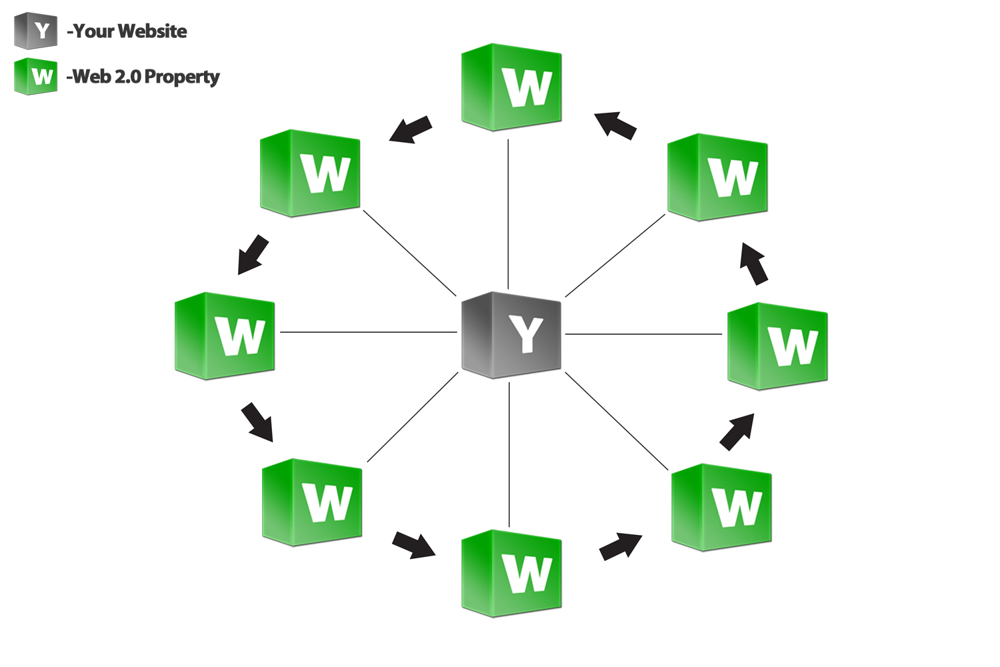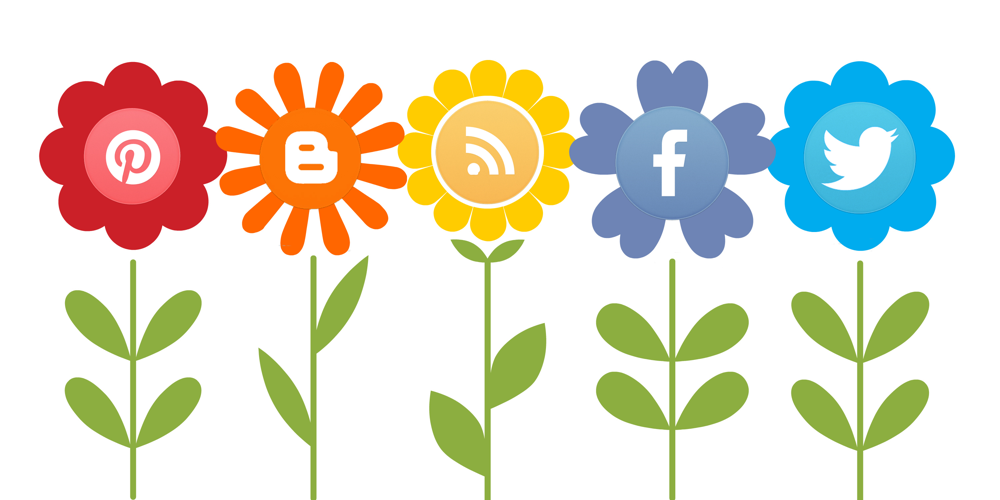The Essential Guide to Digital Marketing for Business Owners
-
Modupe Ajongbade
What Is Digital Marketing? Simply put, digital marketing is promoting your products or services online – using websites, social media, mobile apps, search engines, and other internet channels investopedia.comen.wikipedia.org. Unlike old-school ads on TV or print, digital marketing lets you directly reach customers wherever they spend time. This is incredibly important today because people are constantly online: for example, there are well over 14 billion mobile devices worldwide (and counting) en.wikipedia.org. In other words, anyone with a connected device can see your message. Digital marketing also lets you target your ideal customers (by age, location, interests, etc.) and measure how well your campaigns work in real time sigmasolve.comsigmasolve.com.

In practice, digital channels give small businesses a huge boost. You can reach a global audience (not just local shoppers), and often at a lower cost than traditional ads sigmasolve.comsigmasolve.com. Plus, you get powerful analytics: every click, view, and purchase can be tracked so you see exactly what’s working sigmasolve.comleaddigital.com. For example, a bakery that optimizes its website for “best chocolate cake” might pop up on page one when hungry customers search those words – something virtually impossible with a print flyer. In short, digital marketing makes it easier for businesses to connect with today’s customers, build brand awareness, and grow sales in measurable ways sigmasolve.comsigmasolve.com.
Major Digital Marketing Channels
There are many ways to go digital. Here are the most important channels that business owners should know about:
Search Engine Optimization (SEO)

Search Engine Optimization (SEO) means improving your website so it ranks higher in search results. In other words, it helps customers find you when they search online. SEO involves tweaking your site’s content, keywords, and technical setup so that Google and other search engines see it as relevant. For example, optimizing your site for “pet grooming [your city]” can make you appear at the top when a local pet owner searches for it en.wikipedia.org. SEO also often uses link-building strategies: the image above shows a “link wheel” where related web pages (green blocks) each link back to your main site (gray block), boosting its authority commons.wikimedia.org. By using SEO, your business increases visibility and brand awareness whenever people search for your products or services en.wikipedia.org.
Content Marketing
Content marketing is about sharing useful, interesting content (like blog posts, videos, infographics, or e-books) to attract potential customers investopedia.com. Rather than directly advertising, you provide value. For example, a lawn care company might publish a blog on “5 Tips to a Greener Lawn.” Readers find the article when searching the web or scrolling social media, and that content can be shared via email or on Facebook to reach more people investopedia.com. Over time, useful content builds trust: customers begin to see your business as an expert. And even if they don’t buy immediately, they’ll remember your brand when they’re ready. Content marketing often ties into other channels – for example, you might promote a helpful video on YouTube or share an infographic on Instagram, driving traffic back to your website investopedia.com.
Social Media Marketing

Social media marketing uses platforms like Facebook, Instagram, Twitter, LinkedIn and others to engage with customers investopedia.com. Think of it as having a conversation with your audience online. The goals are usually to build brand awareness and trust investopedia.com. You might post updates, product photos, or behind-the-scenes videos. For example, a boutique could share outfits of the day on Instagram, or a cafe might use Facebook Live to show how its baristas make latte art. The key is to pick the right channels: if you sell visuals-heavy products (like handmade crafts), Instagram or Pinterest might be best; if you offer professional services, LinkedIn could be more effective nerdwallet.com. By interacting with followers – answering comments, asking questions, running polls or contests – you turn followers into customers. You can also use paid social ads: for instance, promoting a post or running a Facebook ad to reach people by location or interests. Social media can even be used for direct sales or lead generation once you have trust investopedia.comnerdwallet.com.
Email Marketing
Email marketing remains one of the most effective digital channels investopedia.com. It involves sending newsletters, updates or promotions directly to people’s inboxes. Typically, you collect email addresses through your website (for example, offering a discount when someone signs up). Then you can inform subscribers about new products, upcoming sales, or helpful tips. For instance, an online shoe store might email subscribers a 10% off coupon or send them a style guide. Because these recipients already showed interest by subscribing, email lets you nurture leads into customers. The key is to send valuable content (not just hard-sell spam) – tips, stories, or exclusive deals will keep readers opening your emails investopedia.com.
Pay-Per-Click Advertising (PPC)
Pay-Per-Click (PPC) advertising lets you buy targeted ads on platforms like Google, Bing, Facebook, or LinkedIn. You choose keywords or audience criteria, and your ad shows up for users who match. You only pay when someone clicks your ad (hence “pay-per-click”). For example, a local electrician might bid on the keyword “emergency electrician” so their ad appears at the top when someone searches for that term. PPC campaigns can be finely tuned: you can target by demographics (age, gender), interests, or even geographic area investopedia.com. Google Ads and Facebook Ads are two popular PPC services investopedia.com. The advantage is speed: while SEO takes time to build, a PPC campaign can start driving visitors immediately. The downside is cost (you pay per click), but because you can set a daily budget, even a small amount can boost visibility. PPC is especially useful for new businesses wanting quick traffic, as long as you monitor and optimize your campaigns based on results.
Affiliate and Influencer Marketing
Affiliate marketing and influencer marketing are ways to leverage others to promote your businessinvestopedia.com. In affiliate marketing, bloggers or website owners earn a commission by featuring your products or services. For example, a popular hobby blog might review your new camera and include a link – if a reader buys through that link, the blog earns a feeinvestopedia.com. Many large companies (like Amazon) run affiliate programs that have paid millions in commissions to affiliates. Influencer marketing is a similar idea on social media: you partner with a social media “influencer” who shares your product with their followers. These influencers (they may have thousands or millions of fans) can give your brand huge exposure. For instance, a food influencer might post a recipe using your seasoning mix. Experts note that influencer marketing can tap “important nodes” in communities and reach large audiences on platforms like Instagram or TikToken.wikipedia.org. For small businesses, you might start with “micro” or “nano” influencers (who have under 10k followers) – they often have high engagement and are more affordable nerdwallet.com. In either case, affiliates and influencers only earn (or work) if they deliver results, so it’s a cost-effective way to reach niche audiences investopedia.comen.wikipedia.org.
Tips for Getting Started with Digital Marketing
Make your website user-friendly and mobile-friendly. Your website is often the centerpiece of your digital marketing investopedia.com. Ensure it loads quickly and looks good on phones and tablets nerdwallet.com. Many website builders (like Wix, Shopify, or Squarespace) offer responsive templates that automatically adapt to mobile screens nerdwallet.com. Check your site on a phone yourself: all buttons and menus should be easy to use.
Claim and update your business profiles. At minimum, create or claim your listing on Google Business Profile (formerly Google My Business) and other search platforms like Bing or Yahoo nerdwallet.com. These free profiles show your address, phone number, hours, and photos to searchers. Keeping them updated (especially your address and hours) helps local customers find you. You can also use Yelp, Facebook Business, and industry-specific directories to reach your community nerdwallet.com.
Understand your target audience. Before you do anything, know who you’re talking to nerdwallet.com. Identify the people most likely to buy your product – their age, interests, location, or problems. For example, if you sell outdoor gear, your audience might be hiking enthusiasts aged 25–40. Understanding this lets you tailor your marketing (messaging, tone, and channel) to them. Create customer “personas” (profiles) in your head and imagine what they want. This helps you choose keywords for SEO, topics for your blog, or which social network to focus on nerdwallet.com.
Invest in content marketing (start a blog or newsletter). Creating helpful content regularly can draw customers in nerdwallet.com. Start a blog on your site or publish articles and videos on topics related to your business. For example, a gardening store could blog about plant care tips. These posts attract visitors via search and give you material to share on social media and email nerdwallet.com. Quality content builds trust over time. Even simple tips or behind-the-scenes stories can engage readers and keep your brand top of mind.
Be active on the right social media platforms. You don’t need to be everywhere, just where your customers hang out nerdwallet.com. If your audience is teenagers, platforms like Instagram or TikTok might be ideal. For a B2B service, LinkedIn could be better. Choose one or two channels that suit your business and post consistently nerdwallet.com. Engage with followers: reply to comments, answer questions, and share user-generated content. The key is authenticity and regular interaction – that’s how social media guides purchasing decisions nerdwallet.com.
Build and use an email list. Start collecting customer emails with permission (e.g., through a signup form or special offer). Then send periodic newsletters or offers nerdwallet.com. Email marketing is highly effective for driving repeat business. For instance, you might email loyal customers a special discount or send a monthly update about new products. Use email software or a simple mail-merge to send personalized messages (like including the recipient’s name). Keep emails focused – share value (tips, news, deals) rather than only selling. This keeps people subscribed and engaged.
Consider a small budget for paid ads. Even if you’re budget-conscious, a bit of paid advertising can kickstart growth nerdwallet.com. You can run low-cost ads on Google or Facebook to reach people who match your audience profile. For example, set up a Google Ads campaign targeting local customers searching for your service. Or boost a Facebook post to people in your area. Paid ads let you target precisely (by age, location, interests) and set a daily spend limit. If an ad doesn’t perform well, you can turn it off or tweak it immediately – unlike a fixed-print ad. Remember to monitor the results (clicks, inquiries, purchases) to judge if the ads are paying off nerdwallet.com.
Set up analytics and track everything. Right away, install tools like Google Analytics on your website (it’s free) and connect Google Search Console. These tools tell you how many visitors you get, how they found you (search engines, social, etc.), and how they behave on your site leaddigital.com. Define a few clear goals (like “increase newsletter sign-ups” or “generate $X in online sales”) and measure them. In Google Analytics, you can set up “Goals” to track specific actions (such as completed purchases or form submissions) leaddigital.comen.wikipedia.org. Regularly review metrics like total traffic, bounce rate, and conversions. These numbers show what’s working: for example, if most traffic comes from organic search, keep doing SEO; if ads are bringing in paying customers, you might allocate more budget there. Having data lets you improve continuously and justify your marketing spend.
Setting Goals and Measuring Success
Setting clear goals is essential. Start by deciding what you want to achieve (e.g. “Get 50 new newsletter subscribers this month” or “Double online sales in Q3”) and make it SMART – Specific, Measurable, Relevant, and Time-bounden.wikipedia.org. For each goal, pick key metrics (KPIs) to track. For example, if your goal is website sales, your KPI might be the conversion rate or number of orders. If it’s brand awareness, you might look at website visits or social media followers.
Use analytics tools to monitor these KPIs. Google Analytics (and similar platforms) can show you detailed reports on traffic sources, user behavior, and conversionsleaddigital.comleaddigital.com. You might look at how many visitors came from Google Search versus Facebook, or what percentage left after viewing only one page (bounce rate). For instance, a custom report could show session duration and goal completions, which are invaluable for understanding engagementleaddigital.com.
Always compare your performance over time. Did web traffic grow after your latest social campaign? Is your email signup rate improving after redesigning your opt-in form? Regularly reviewing data lets you answer these questions. When something isn’t working (for example, an ad campaign underperforms), use your analytics to diagnose why and adjust – maybe a different ad copy or targeting is needednerdwallet.com. In short, treat marketing as an ongoing process: set targets, measure results with tools like Google Analytics, and refine your strategy step by stepsigmasolve.comleaddigital.com.
By defining goals and continually measuring, you ensure your digital marketing efforts stay on track. Over time, this data-driven approach helps you invest in the channels and tactics that give the best return for your business.
In summary: Digital marketing opens up a world of opportunities. By understanding each channel and starting with small, tracked steps, you’ll be able to connect with customers online and grow your business in today’s digital agesigmasolve.comsigmasolve.com.
